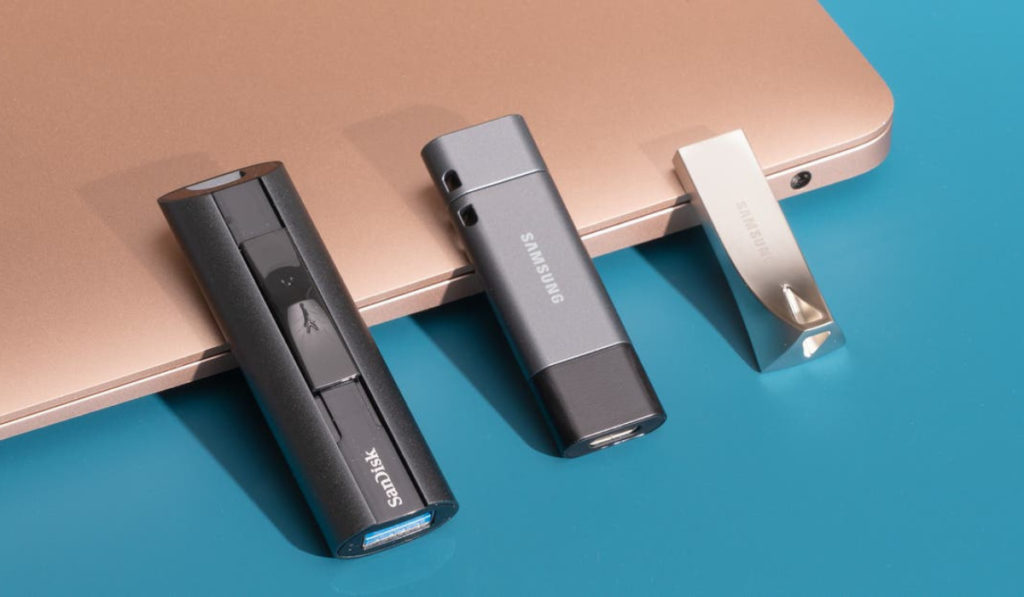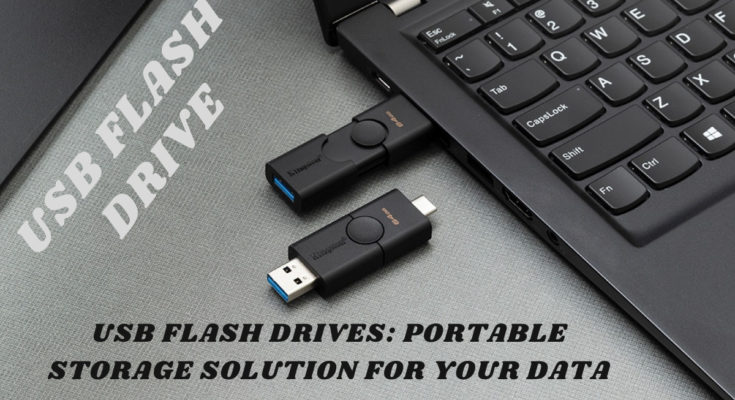USB FLASH DRIVE :-

A USB flash drive is a small and portable storage device that uses flash memory to store and transfer data. It is also commonly referred to as a USB stick, thumb drive, or memory stick.
USB flash drives typically connect to a computer’s USB port and can store various types of digital files such as documents, photos, music, and videos. They are popular due to their small size, durability, and high storage capacity.
USB flash drives come in a variety of storage capacities, ranging from a few gigabytes to several terabytes. They are often used to transfer files between computers, back up important data, and carry important files on the go.
To use a USB flash drive, simply plug it into an available USB port on a computer, and the computer will recognize it as a removable storage device. From there, you can easily copy and paste files onto the drive, and then safely eject it before removing it from the USB port.
USB FLASH DRIVES: PORTABLE STORAGE SOLUTION FOR YOUR DATA
USB flash drives are a popular portable storage solution for storing and transferring data. They are small, lightweight, and can easily fit in your pocket or bag, making them ideal for people who need to carry important files with them on the go.
USB flash drives are also very versatile and can be used to store a variety of digital files, including documents, photos, music, and videos. They are compatible with most modern computers and laptops, and many newer devices like smartphones and tablets also support USB OTG (On-The-Go) functionality, which allows you to connect a USB flash drive directly to your device.
One of the advantages of using a USB flash drive is that they are relatively inexpensive and offer a high amount of storage capacity for their size. They are also easy to use – simply plug them into a USB port on your computer, drag and drop your files onto the drive, and then safely eject it before removing it from the port.
However, it’s important to remember that USB flash drives can be lost or stolen, so it’s a good idea to make backup copies of important files and store them in a secure location. Additionally, you should always make sure to scan any files you copy to or from a USB drive for viruses or malware to ensure the safety of your computer and data.
TYPES :-
There are several types of USB flash drives available on the market. Some of the most common types include:
1. Standard USB flash drive: This is the most common type of USB flash drive and typically features a rectangular shape with a USB connector at one end.
2. Micro USB flash drive: These are smaller versions of standard USB flash drives and are designed for use with mobile devices like smartphones and tablets. They often have a micro USB connector on one end and a standard USB connector on the other.
3. USB 3.0 flash drive: USB 3.0 is the latest version of the USB standard and offers faster data transfer speeds than USB 2.0. USB 3.0 flash drives are backward compatible with USB 2.0 ports, but to take advantage of their higher speeds, you’ll need a computer or device with a USB 3.0 port.
4. Secure USB flash drive: These are USB flash drives that feature built-in security features such as password protection, encryption, or fingerprint scanning. They are designed to protect your data from unauthorized access or theft.
5. High-capacity USB flash drive: These are USB flash drives with storage capacities that range from 128GB to several terabytes. They are ideal for people who need to store large amounts of data, such as high-resolution photos, videos, or music.
6. Novelty USB flash drive: These are USB flash drives that come in unique shapes or designs, such as characters from popular movies, animals, or food items. They are often used as fun gifts or promotional items.
FUNCTIONS :-
USB flash drives offer several functions that make them a popular choice for storing and transferring data. Some of the primary functions of USB flash drives include:
1. Storage: The primary function of a USB flash drive is to store digital files, such as documents, photos, music, and videos. USB flash drives are available in a range of storage capacities, from a few gigabytes to several terabytes, making them an ideal solution for people who need to store and transport large amounts of data.
2. Transfer: USB flash drives can be used to transfer data between devices. For example, you can copy files from your computer to a USB flash drive and then transfer them to another computer or device. This makes them a convenient tool for sharing files with others or accessing data from multiple devices.
3. Backup: USB flash drives can be used to backup important files, such as documents or photos, to prevent data loss in the event of a computer crash or other disaster.
4. Bootable Drive: USB flash drives can be used as bootable devices to run operating systems, repair utilities, or virus scanners.
5. Security: Some USB flash drives offer built-in security features, such as password protection, encryption, or fingerprint scanning, to protect sensitive data from unauthorized access.
6. Advertising: Novelty USB flash drives can be used as promotional items, featuring logos or slogans of companies, brands, or organizations.
Overall, USB flash drives offer a range of functions that make them a versatile tool for storing, transferring, and accessing data.



